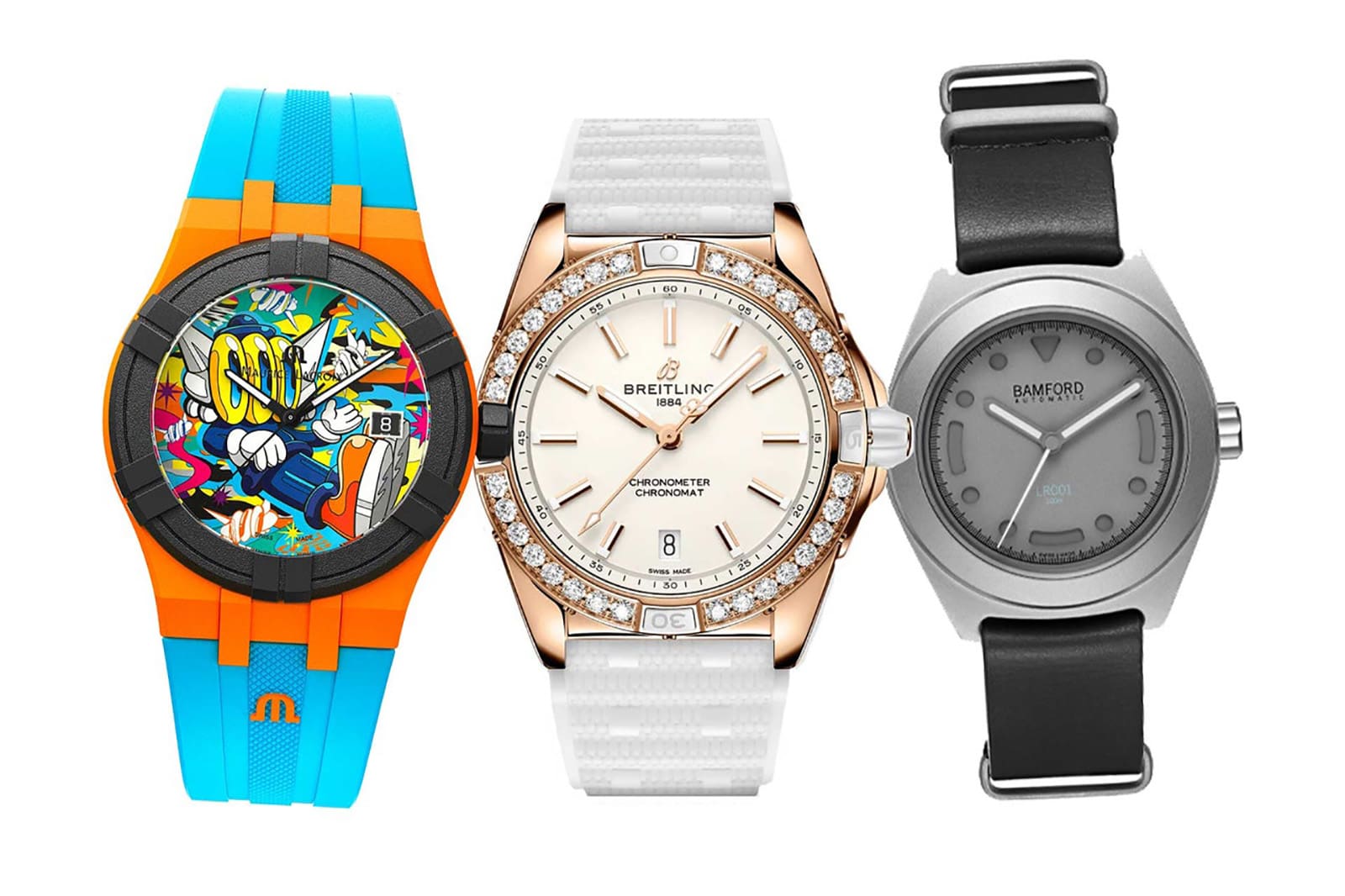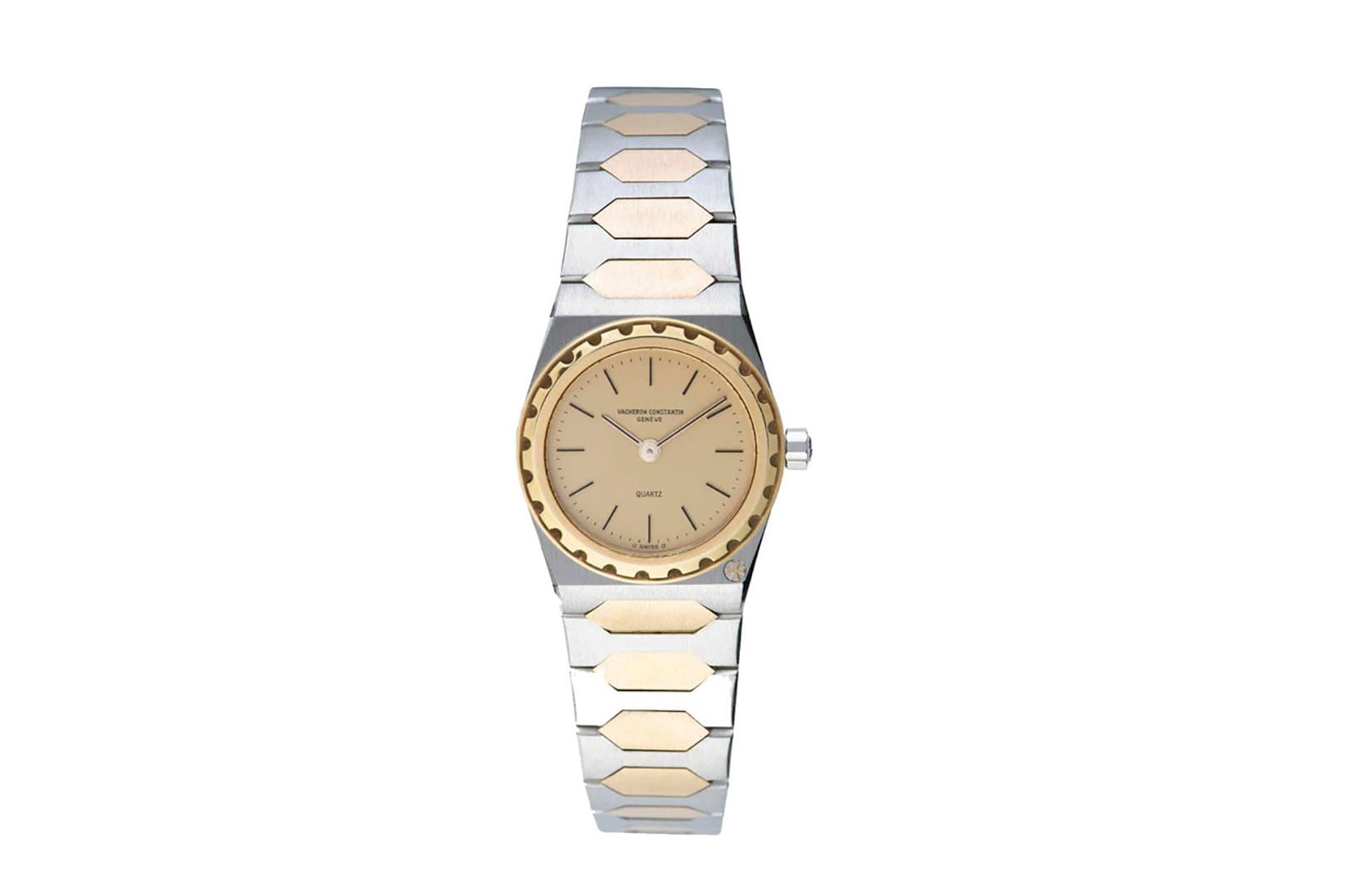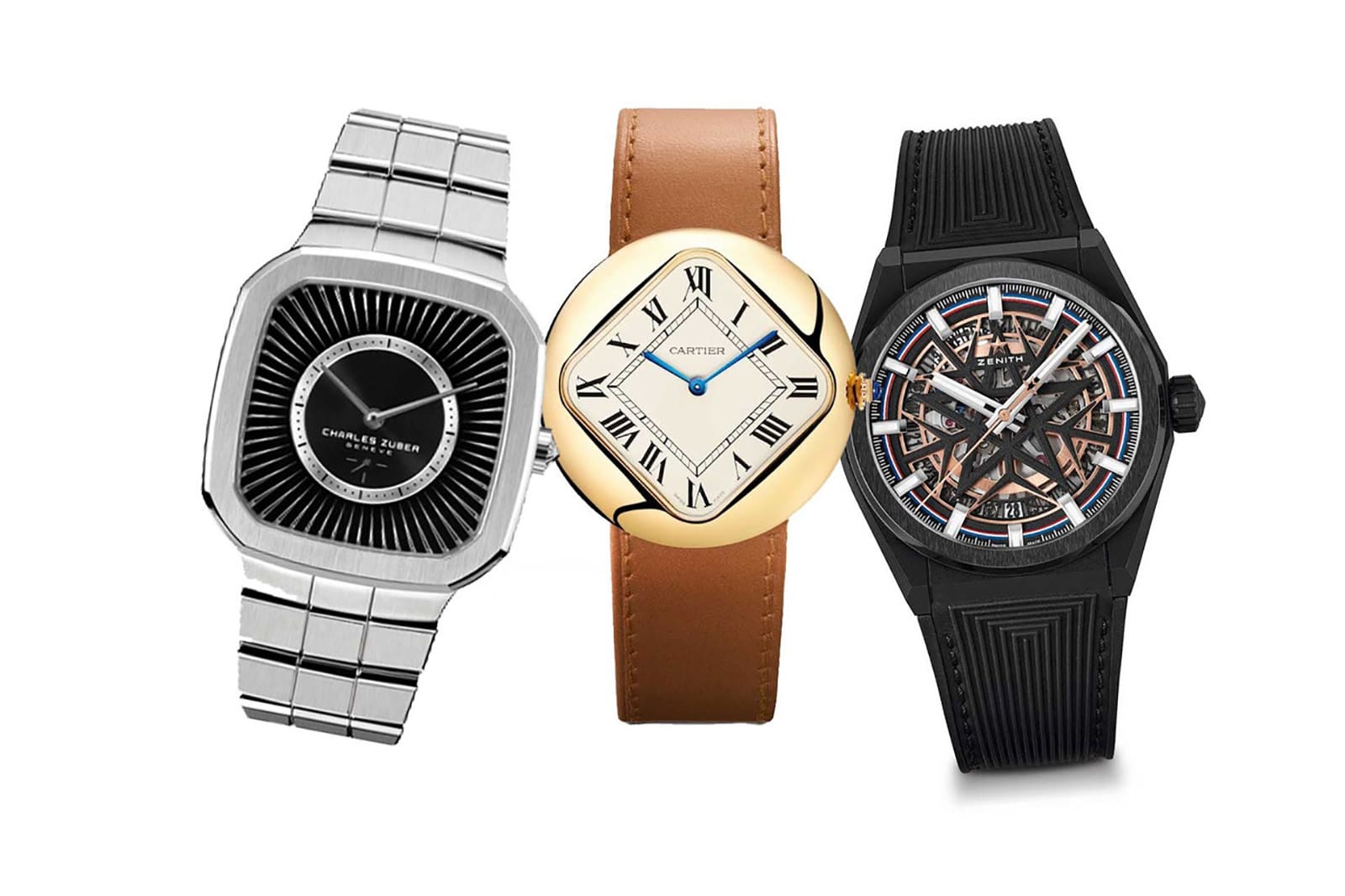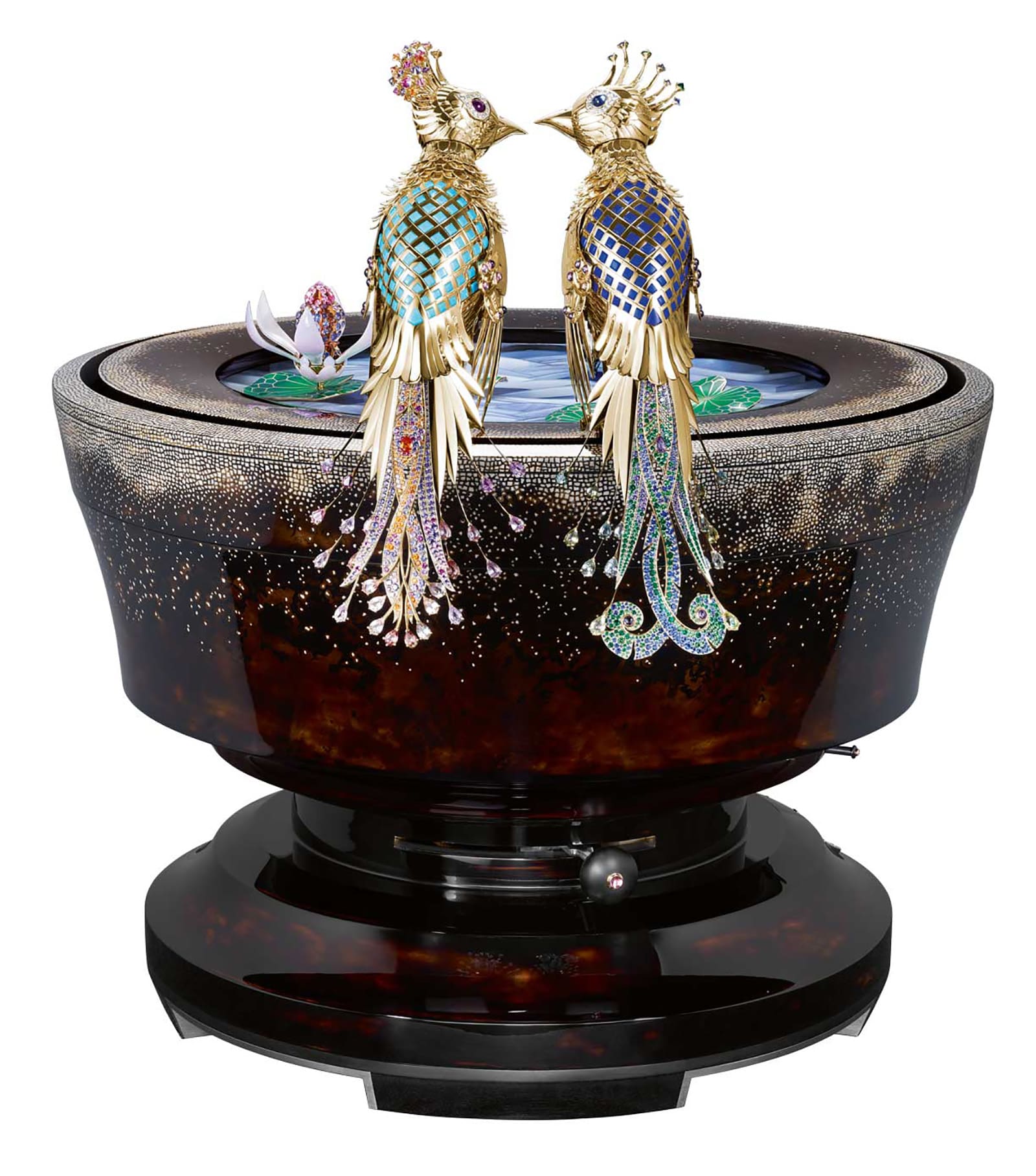Photographed by Phil Oh | @mrstreetpeeper
Now is a great time to invest in a timepiece
In 2022, it finally felt as though lockdowns were behind us, presenting a chance to savor one small, positive side-effect of the pandemic, which paradoxically has ushered in a golden age for luxury watchmaking. Enthusiasts had time on their hands to look beyond mainstream brands, while novices began researching their first purchases—all of which saw the world of watches flourish.
The future is looking bright for 2023: here are five watch trends set to define the new year.
Unisex

Gender-neutral watches have been popping up in the horological conversation for some time, but only recently has it felt like brands are actually walking the walk. Recent launches have offered, quite simply, a superbly designed new watch—rather than a women’s and men’s version of the same model—then let consumers decide if it speaks to them.
Patek Philippe’s vibrant new Aquanaut Luce Rainbow chronograph may be billed as the watchmaker’s first self-winding ladies chronograph (and come with three interchangeable straps), but if the likes of Mark Wahlberg, Cristiano Ronaldo and Steve Harvey are all fans of rainbow gem-set watches, the only rule now is that there aren’t any.
Omega’s new, ultra-classic De Ville Prestige has undergone a streamlined nip-and-tuck, but notably expanded too, with an impressive array of new colors and sizes. Finally, there’s something kind of rule-breaking and androgynous about non-round watches, with the new cushion-shape Bell & Ross BR-X5, and Gucci’s 25H looking especially fresh.
Sustainability reboot

The technology around sustainable materials and processes finally seems to be catching up with consumers’ expectations, and several pioneering watch brands are taking note. Breitling recently unveiled its first fully traceable gold and diamond watch, the gold hailing from Colombia’s artisanal Touchstone mine, which is accredited by a Swiss non-profit, while the diamonds around the bezel are lab grown by a certified New York City-based supplier.
Elsewhere, Ulysse Nardin watches are becoming more genuinely green; its latest Arctic Night diver is a collaboration with the Norwegian outwear company Norrøna and features the likes of carbonium, a special material taken from offcuts of airplane parts, straps made from recycled fishing nets and steel from recycled automotive materials. Maurice Lacroix is doing its bit for our oceans—its zingy Aikon #tide models are crafted from a special composite material that combines upcycled plastic with glass fibre—17 bottles to be exact—in a super robust finish that’s twice as hard as standard plastic, five times as resistant, and promises a carbon footprint six times lower than PET.
Finally, “modern luxury” was the key buzzword when Bamford London and Land Rover unveiled a new partnership last month, with pared-back, thoughtfully designed titanium watches featuring non-leather straps made from corn and canvas. Greenwashing and virtue signalling suddenly feel oh so 2022…
Pre-loved luxury

While the pre-owned watch market has always had a place in the industry, the sector has only recently been upgraded from rarely-mentioned step-child to head table power player. Rolex’s freshly launched certified pre-owned program (CPO) is a major game-changer: watches will be given a two-year international Rolex CPO warranty and dedicated Rolex CPO accessories, with Bucherer named as the first official Rolex CPO retailer. Such a legitimate program from the world’s leading watch brand will only give a boost to other brand-led initiatives, such as Vacheron Constantin’s Les Collectionneurs. Here, important watches by the maison are restored, certified and guaranteed, often in close collaboration with the heritage department, and you can find some truly rakish gems, like a two-tone steel and gold 222 from 1981.
Elsewhere, Richard Mille has since 2015 (aeons in the certified pre-owned world), opened dedicated retail outlets that sell authorized pre-owned pieces, with locations in Japan and London (Geneva will follow soon). It’s now beefing up its offering with a special crash-course in how to spot counterfeits. Education, transparency and legitimacy are after all driving the pre-loved market, which will continue to hit its stride in 2023.
Retro cool continues

Watchmakers’ enduring love affair with the 1960s and 1970s shows no sign of slowing, if 2022’s spate of end-of-year launches are any indication. Cartier’s reissuing of its darling Pebble watch on the occasion of its 50th birthday was a boon to collectors, as pent-up demand for the round watch with a square dial reached fever pitch last year, when an original 1972 model fetched around £359,000 at Phillips.
Meanwhile, a collaboration between Zenith and skiwear label Fusalp is not so much the Swiss watchmaker’s first fashion partnership as it is rooted in a kindred, shared history. In 1966, Fulsap invented the first competition ski suit, which the French national ski team wore when they won a record number of medals at the 1966 Portillo Alpine World Championships. Around the same time Zenith was putting the final touches to the world’s first automatic chronograph, the game-changing El Primero calibre of 1969.
Finally, the rebirth of the Swiss watch and jewelry brand, Charles Zuber, is making its mark with a clear 1960s vibe: the steel watch features a jaunty cushion shape case paired with a striking sunburst dial, all set on an architectural three-link bracelet. The late Charles Zuber made his name lending his pen to the defining brands of the Swinging Sixties—Harry Winston, Audemars Piguet and Piaget among them—and his reimagined designs are sure to catch on with the style set 60 years on.
Mechanical wonders

As anachronistic as mechanical objects and watchmaking complications might seem in our digital age, they are in fact gaining traction as collectors increasingly seek emotional, meaningful objects that defy belief. The esteemed watch industry awards known as GPHG added a new category dedicated to mechanical clocks in 2022, the inaugural accolade going to a bejeweled fountain-style automaton by Van Cleef & Arpels that features a retrograde display and music box. Expect more such extraordinary desk objects to come from this venerable house.
Audemars Piguet is leading the charge on the wristwatch front: its new Code 11.59 Starwheel may be time-only, but it tells it via a wandering hours mechanism, a roaming satellite-style invention from the—wait for it—17th century. Finally, the storied Swiss clockmaker L’Epée is really only still here 183 years later thanks to a recent surge in cool, mechanical wonders that have cross-collecting appeal with fans of avant-garde indie brands like MB&F and Chanel. But L’Epée’s new race car-style clock collab with Bucherer shows that such mechanical desk objects will be hitting the mainstream soon. You heard it here first…
This article was originally published on British Vogue.
